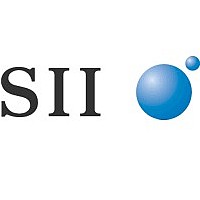XH311HG-II45E Seiko Instruments, XH311HG-II45E Datasheet - Page 21

XH311HG-II45E
Manufacturer Part Number
XH311HG-II45E
Description
CAP DOUBLE LAYER ELEC .02F 3.3V
Manufacturer
Seiko Instruments
Series
XH-HGr
Datasheet
1.XH311HG-II45E.pdf
(24 pages)
Specifications of XH311HG-II45E
Capacitance
20mF
Voltage - Rated
3.3V
Mounting Type
Surface Mount
Package / Case
Surface Mount - Coin Style
Height
0.043" (1.10mm)
Size / Dimension
0.150" Dia (3.80mm)
Operating Temperature
-20°C ~ 60°C
Lead Free Status / RoHS Status
Lead free / RoHS Compliant
Tolerance
-
Lead Spacing
-
Esr (equivalent Series Resistance)
-
Lifetime @ Temp.
-
Other names
728-1063-2
Micro-Energy Division Lithium rechargeable batteries (HB, MS, TS) contain fl ammable organic
solvents. For your safety, please follow the following precautions.
Micro Battery 2010-2011
• If leaked liquid gets in the eyes, wash them with
• Do not use new and used batteries together. Do
• If you connect two or more batteries in series or
• Do not use nor leave the batteries in direct sun-
• Do not charge by higher current or higher volt-
• Do not heat, disassemble nor dispose of in fi re
• Do not solder directly to the battery
• Do not short.
• Keep batteries out of children’s reach.
• Do not reverse placement of (+) and (-)
International Air/Marine/Ground Transportation
clean water and consult a physician immediately.
not use different types of batteries together.
It may cause fi re, heat generation, leakage or bursting.
parallel, please consult us in advance.
It may cause bursting or fi re due to unbalanced load or
voltage.
light nor in high-temperature areas.
It may cause fi re, heat generation, leakage or bursting.
Doing so may generate gas inside the battery, resulting
swelling, fi re, heat generation or bursting.
Doing so damages the insulation materials and may
cause fi re, heat generation, leakage or bursting.
If soldering is performed directly to the battery, the battery
is heated up, consequently causing leakage, explosion or
fi re due to overheating from internal short-circuit.
I
short-circuit occurs. As a result, fire, heat generation,
leakage or bursting may occur.
If leaked liquid is ingested or a battery is swallowed, con-
sult a physician immediately.
If the (+)and(-) side of the battery is reverse inserted, it may
cause a short-circuit or over discharge of the battery on some
equipment and it may induce overheating, explosion or fi re.
age than specifi ed.
• Pay attention to mat or sheet for ESD
• Pay attention to soldering by tips
f the (+) and (-) come into contact with metal materials,
Regarding the transport of Lithium battery, organizations like
IATA, ICAO, IMO, DOT have determined transport regulations,
based on the United Nations Regulations.
The SII Lithium rechargeable batteries can be transported be-
ing not subject to the provisions of dangerous goods, if they
meet the following requirements.
(a) <Caution Label> Lithium battery handling label (IATA Dan-
gerous Goods Regulations Figure 7.4. ) must be put on each
package.
(b) <Not Restricted Declaration> Each shipment must be
accompanied with a document indicating that the packages
contain Lithium batteries, that the packages must be handled
with care, and that special procedures should be followed in the
event the package is damaged, and a telephone number for ad-
ditional information.
Precautions for Your Safety
Battery with tabs or battery on PCB may short-circuit on the
mat for ESD. As a result the voltage of the cell is reduced.
Do no touch the battery by solder chips, when soldering an-
other components after equipping battery.
Keep any high temperature process away from battery.
For prevention of performance deterioration of battery
International Transportation and Disposal
WARNING!
CAUTION!
• Do not discharge by force
• In case of leakage or a strange smell, keep away from
• Do not apply strong pressure to the batteries nor
• Avoid contact with water.
• Keep batteries away from direct sunlight, high
• Pay attention to material of jig for pick and place
• Pay attention to washing and drying
Disposal
• In case of disposal, insulate between (+) and (-)
Example Example of insulation
Use non-conductive material of jig for pick and place of batter-
ies, for short-circuit protect. If short-circuit of battery occurs, the
voltage of battery drops down quickly but raises gradually.
Some detergent or high temperature drying may cause deterio-
rate of battery. If you need to wash batteries, consult us.
I
ternal power supply etc., voltage of the battery will decline
lower than 0 volts (electrical reversal) and will cause the
battery case to expand, overheat, leak, explode or burn.
fi re to prevent ignition of any leaked electrolyte.
of battery by an insulating material.
Jumbling batteries or with other metal materials cause
short-circuit. As a result, fi re, heat generation, leakage or
bursting may occur.
handle roughly.
It may cause fi re, heat generation, leakage or bursting.
It may cause heat generation.
temperature and humidity.
It may cause heat generation or performance deteriora-
tion.
(c) <Weight Limit> Except in the case of packed with equip-
ment, package may not exceed 2.5 kg gross mass.
(d) <Strong Packaging> Batteries are separated so as to pre-
vent short-circuit and are packed in strong packaging.
(e) <Package Drop Test> Each packages is capable of with-
standing a 1.2m drop test in any orientation without damage to
batteries contained.
For further information, please consult with us.
Recent environment protection concerns have increased glob-
ally and waste and recycling are regulated in the world. The
current regulations differ in each country, state and local mu-
nicipality. Please consult local regulations and authorities for
recommended disposal of batteries. If you are in question of
application or safety of our batteries, please consult your local
authorities.
f the battery is discharged by direct connection to an ex-
Do not jumble batteries
Insulating tape
discharge
Contacting between batteries cause
short-circuiting such as above diagram.
Short-circuiting
discharge
21











